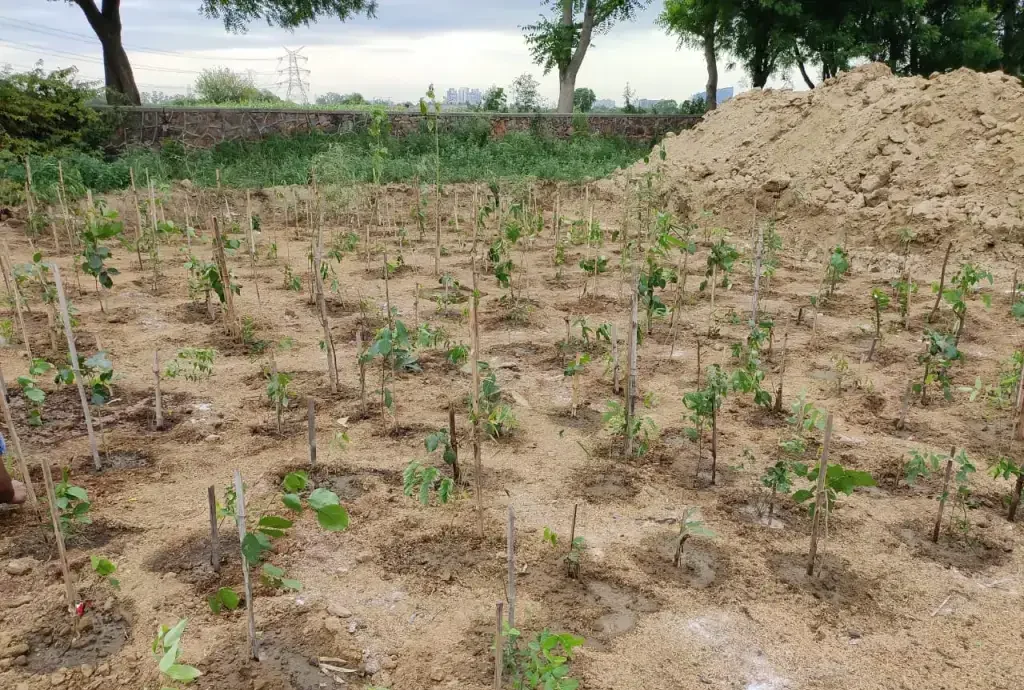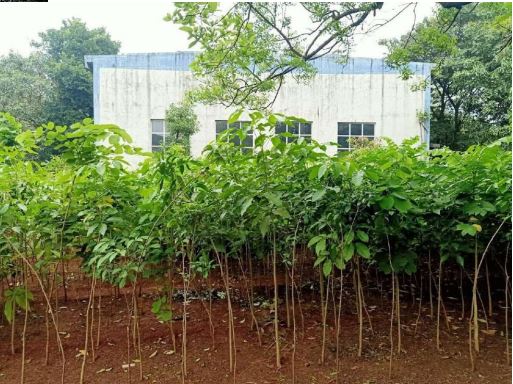🌿 Urban Green Policies & Miyawaki Forests: A Greener Future for Indian Cities
Miyawaki Plantation & Urban Green Policy
India’s cities are growing fast — but not always in the right direction. Urban areas face rising temperatures, worsening air pollution, and shrinking green spaces. In response, governments, environmental boards, and citizen groups are adopting a new mantra: green cities are livable cities.
Two major approaches stand out:
- Urban Green Policy — strategic guidelines for city-level greening
- Miyawaki Plantation — a dense, native forest-building technique
Together, these strategies are reshaping how India thinks about sustainability, urban design, and community well-being.
🌆 Why Urban Green Policies Matter
Urban Green Policies refer to government-led initiatives that mandate and guide the creation, preservation, and expansion of green spaces in cities. These policies are designed not only to beautify cities but to address serious environmental concerns:
- Air pollution
- Urban heat islands
- Loss of biodiversity
- Water runoff and soil erosion
- Mental and physical health degradation
📘 Policy in Action: Ahmedabad’s New Rule
In July 2025, the Ahmedabad Municipal Corporation (AMC) passed a new rule under its Urban Green Policy:
5% of land in all new Town Planning (TP) schemes must be reserved for green cover, with 1% specifically for dense forest cover using the Miyawaki method.
Illegal tree felling is also penalized with a fine and a tree replacement mandate — 10 trees for every one cut, plus a ₹5,000 deposit per tree.
🌱 Miyawaki Method: Forests in Small Spaces
The Miyawaki Method, developed by Japanese botanist Dr. Akira Miyawaki, enables the creation of self-sustaining, native forests in just a few hundred square meters.
Key Features:
- Uses indigenous/native species
- Plants 3–4 saplings per sq. meter
- Grows 10x faster and 30x denser than conventional plantations
- Reaches natural forest maturity in 10–15 years, not 50
Environmental Benefits:
- Improves air quality by absorbing CO₂, PM2.5, NO₂
- Lowers local temperature (by 2–5°C)
- Increases groundwater recharge
- Creates urban biodiversity hotspots
- Reduces noise and dust pollution


🏛 Government & Legal Framework
-
GPCB (Gujarat Pollution Control Board)
- Supports green infrastructure under Environment Protection Act, 1986
- Aligns with National Ambient Air Quality Standards (NAAQS)
- Approves Miyawaki plantations in industrial and residential areas as pollution offset
-
CPCB (Central Pollution Control Board)
- Recommends urban forestry and green buffers around red-category industries
- Encourages implementation through State Action Plans for climate and pollution control
- All large-scale urban projects must submit Environmental Clearance (EC) through Parivesh, including detailed landscaping, tree cover, and biodiversity impact reports
- Projects with less than 33% green cover often require revisions
-
National Green Tribunal (NGT)
- Has issued multiple judgments protecting urban trees
- Penalizes authorities and developers for tree cutting without NOC
🏗 Real-Life Examples: Green India in Action
🌳 Ahmedabad (Gujarat)
Under AMC’s new rule:
- A developer building on 1 lakh sq. meters must allocate 5,000 sq. meters to green cover, including 1,000 sq. meters to Miyawaki plantation
- This can house ~3,000 native saplings
- Planted forests must include trees like neem, karanj, amla, gulmohar, babul, etc.
🌳 Kanpur (Uttar Pradesh)
As part of the Urban Green Policy of 2025, the city:
- Planted 46 lakh saplings in a district-wide drive
- Developed dense Miyawaki groves near industrial zones to absorb pollution
- Supported by UPPCB and AMRUT 2.0 funding
🌳 Delhi
- MCD planted 22,000 saplings over 4.5 acres using Miyawaki technique
- Focused on unauthorized colonies where traditional parks weren’t feasible
- Trees reached 2 meters in height within 1 year
🌳 Chhattisgarh – Raipur
A youth-led initiative created a mini forest on 5,000 sq. ft., now housing over 2,500 saplings, attracting birds, butterflies, and improving air quality
🌳 Corporate Example – SECL, Chhattisgarh
South Eastern Coalfields Ltd. invested ₹4 crore in planting 20,000 trees using the Miyawaki method in a mining region, drastically reducing local dust pollution
🧪 Science Behind Miyawaki: Why It Works
| Feature | Impact |
| High sapling density | Creates competition → faster growth |
| Mixed native species | Mimics natural forest → resilience |
| Mulching & soil care | Retains moisture, reduces maintenance |
| Rapid canopy closure | Suppresses weeds naturally |
Unlike conventional plantations, Miyawaki forests require no trimming, chemical fertilizers, or pesticides, making them sustainable and low-maintenance after the first 2–3 years.
📜 Urban Green Policy — A Step Toward Sustainable Cities
India’s national and state governments have begun recognizing the critical importance of urban greenery. Some key policy developments:
- AMRUT 2.0: Prioritizes urban forestry and green space per capita
- National Clean Air Programme (NCAP): Funds city-level plantation drives
- Swachh Bharat Urban: Now includes green rating metrics
- Uttar Pradesh Green Policy 2025: Introduces Green City Scorecard from Green to Green +++, based on urban tree density, Miyawaki projects, and citizen participation
💰 Funding & CSR Opportunities
- Industries are encouraged by State Pollution Boards to invest in green buffers
- CSR funds are being directed to community-level Miyawaki projects
- Local wards and RWAs (Resident Welfare Associations) can apply for:
- Grants under Urban Forest Schemes
- Tree sapling subsidies
- Technical guidance via Forest Departments
👨👩👧👦 Community Participation: A Green Movement
The success of Miyawaki projects often depends on local involvement. Schools, colleges, NGOs, and citizen groups are actively:
- Donating land and labor
- Organizing plantation drives
- Monitoring tree survival and growth
- Naming “Forest Heroes” to maintain civic pride
🔍 Monitoring & Evaluation
Urban greening efforts, especially under government funding, are monitored using:
- GIS mapping
- Drone surveys
- Monthly survival audits
- Dashboards integrated into Parivesh Portal
Cities failing to meet green cover targets face funding cuts or public disclosure.
⚠️ Challenges & Mitigation Strategies
| Challenge | Solution |
| Lack of space | Use rooftops, walls, abandoned plots, traffic islands |
| Maintenance in early years | Install drip irrigation, mulch, solar fencing |
| Poor species choice | Use local forest department-approved species list |
| Vandalism or negligence | Encourage community “ownership” through student or RWA stewardship |
| Misuse of funds | GPS tracking, photo-verification, public dashboard reporting |
✅ Checklist for Implementing a Miyawaki Forest
- Identify land (min. 100–200 sq. meters)
- Conduct soil and water testing
- Shortlist 25–50 native species
- Prepare land with compost, manure, and mulch
- Plant 3–4 saplings per sq. meter
- Install irrigation (drip preferred)
- Monitor survival for 3 years
- Hand over to local bodies/school/NGO for maintenance
📌 Conclusion: The Way Forward
Urban Green Policies backed by Miyawaki plantations are more than just environmental initiatives — they are investments in public health, climate resilience, and social well-being. With smart planning, strong enforcement, and local involvement, cities can transform barren plots into thriving ecosystems in under five years.
From Ahmedabad to Raipur, from schoolyards to coal mines, the urban forest movement is growing — tree by tree, ward by ward.
As climate challenges mount, these small forests will be the lungs, shields, and soul of future cities.

